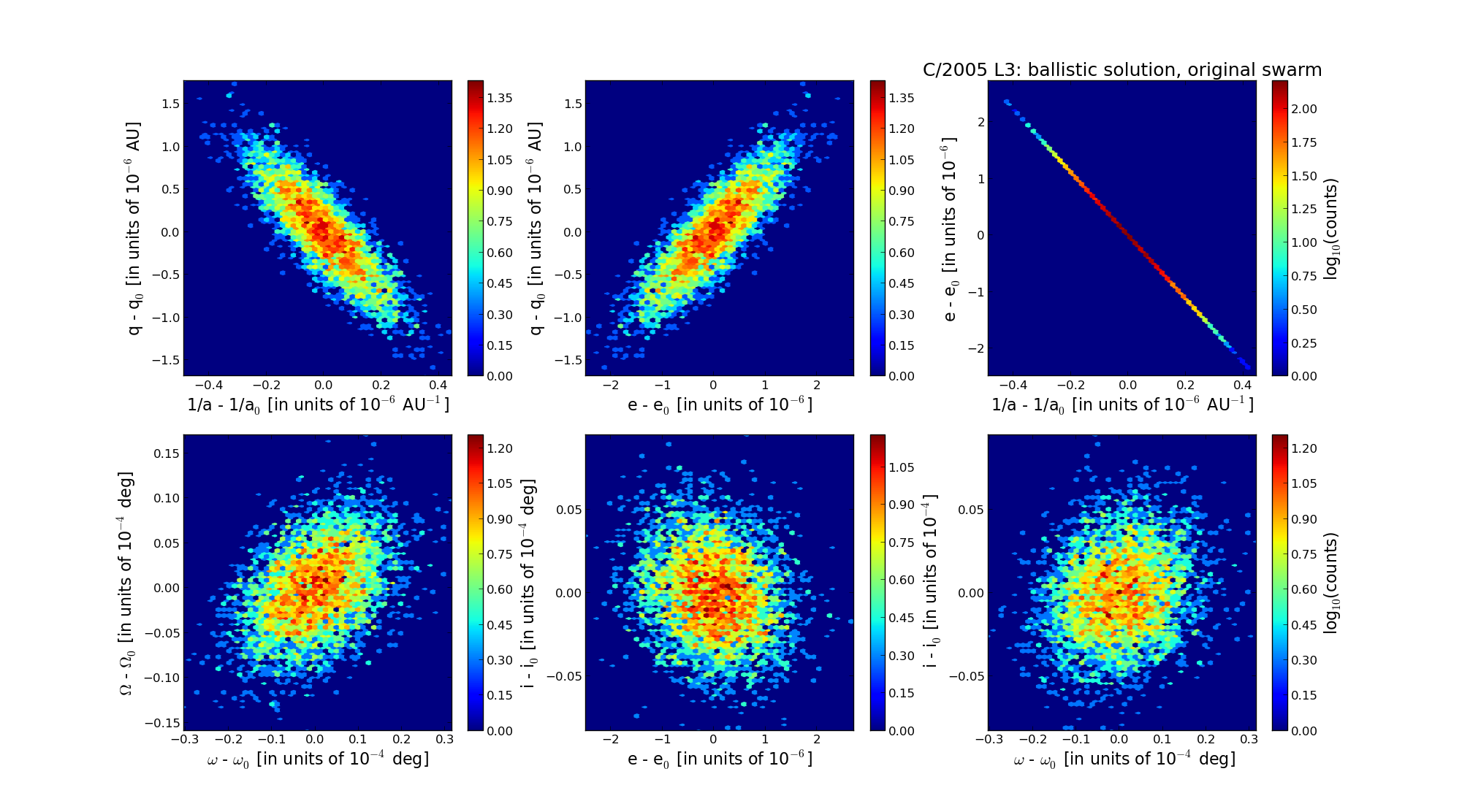| Solar System Dynamics & Planetology Group |
 |
C/2005 L3 McNaught |  |
| Solar System Dynamics & Planetology Group |
 |
C/2005 L3 McNaught |  |
| number of observations | 5337 |
| number of residuals | 10503 |
| data interval | 2004 July 16 — 2013 Mar. 15 |
| rms [arcsec] | 0.49 |
| orbit quality class | 1a+ |
| Epoch (TT) | 20080115.0 | = JD 2454480.5 |
| time of perihelion passage (TT) | 20080116.005851 | ± 0.000088 |
| perihelion distance | 5.59327050 | ± 0.00000047 |
| eccentricity | 0.99991033 | ± 0.00000071 |
| argument of perihelion [deg] | 47.096947 | ± 0.000009 |
| longitude of the ascending node [deg] | 288.739107 | ± 0.000004 |
| inclination [deg] | 139.448742 | ± 0.000002 |
| inverse semimajor axis [10-6 au-1] | 16.03 | ± 0.13 |

| Epoch (TT) | 17010305 | |
| time of perihelion passage (TT) | 20080115.292269 | ± 0.000088 |
| perihelion distance | 5.58682654 | ± 0.00000053 |
| eccentricity | 0.99965548 | ± 0.00000070 |
| argument of perihelion [deg] | 47.073480 | ± 0.000009 |
| longitude of the ascending node [deg] | 288.707828 | ± 0.000004 |
| inclination [deg] | 139.391017 | ± 0.000002 |
| inverse semimajor axis [10-6 au-1] | 61.67 | ± 0.13 |
| Epoch (TT) | 23171002 | |
| time of perihelion passage (TT) | 20080114.821598 | ± 0.000088 |
| perihelion distance | 5.58874050 | ± 0.00000040 |
| eccentricity | 0.99836758 | ± 0.00000070 |
| argument of perihelion [deg] | 47.063435 | ± 0.000009 |
| longitude of the ascending node [deg] | 288.804398 | ± 0.000004 |
| inclination [deg] | 139.445843 | ± 0.000002 |
| inverse semimajor axis [10-6 au-1] | 292.09 | ± 0.13 |